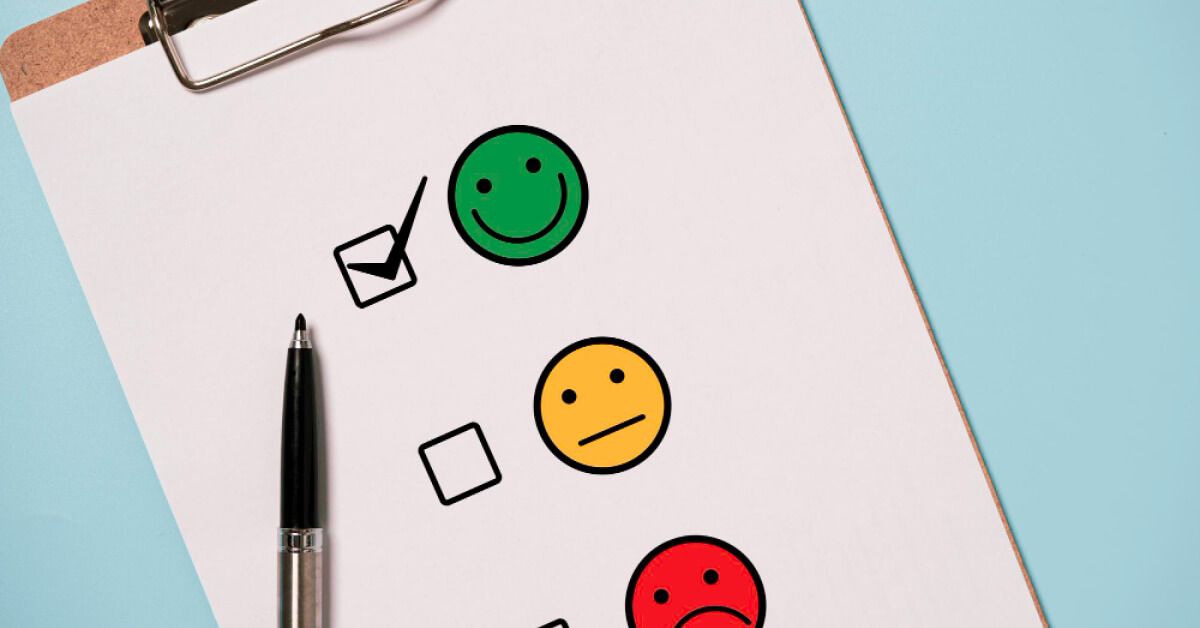Why employee lifecycle surveys are the secret to building a high-performance culture

Let’s imagine, a few years back, Company X launched what they thought was a knockout employee engagement campaign — snacks in the breakroom, branded swag, and an annual emoji-filled survey. It looked great on the surface.
But when one of their top performers quit unexpectedly, the exit interview said it all: “No one ever asked how I felt during onboarding.”
This hits hard right?
They realized they were trying to capture a 12-month employee experience with a one-time pulse — like reviewing a Netflix series based only on the trailer. And they’re not alone. Many teams still rely on occasional feedback, hoping it paints the full picture. It doesn’t.
That moment led Company X to rethink everything — and discover the power of employee lifecycle surveys.
These aren’t just surveys for the sake of asking more questions. They’re about asking the right questions, at the right time, across the entire employee journey — from pre-hire to exit.
If you’ve ever felt blindsided by quiet quitting, puzzled by disengaged teams, or frustrated by vague engagement scores, you’re not alone. This post is for HR leaders who want real insight — not just annual smiley-face data.
We’re diving into:
- What employee lifecycle surveys are (and what they’re not)
- Key benefits of conducting employee lifecycle surveys
- And how to turn one-off feedback into a continuous understanding of your people
Spoiler: It’s not about checking more boxes. It’s about finally connecting the dots.
What are employee lifecycle surveys?

Employee lifecycle surveys are structured feedback tools designed to capture employee sentiment at key stages of the employee life cycle—from the moment someone hears about your company to the day they walk out the door. Instead of waiting for an annual engagement survey to understand how employees feel, these surveys are delivered at specific moments, allowing for continuous employee feedback: pre-hire, onboarding, development, retention, and exit.
Think of them as checkpoints along the employee experience lifecycle. They help organizations track how people perceive the workplace at each touchpoint, especially during key moments, allowing for timely interventions, smarter decisions, and more personalized support.
Whether you're trying to measure the impact of your onboarding process or understand why high performers are leaving, a lifecycle survey gives you relevant insights when they matter most.
These surveys are more than just data collection. When thoughtfully designed, they ask targeted questions based on where an employee is in their journey.
For example, onboarding surveys might focus on clarity of expectations and career development, while exit surveys explore reasons for departure. The goal? Understand and improve each phase of the employee lifecycle model—so employees stay longer, feel more engaged, and perform better.
Key benefits of employee lifecycle surveys

When done right, employee lifecycle surveys do more than just collect feedback—they offer a window into the full employee experience. These surveys let you listen with intent, act with clarity, and fine-tune your culture before small issues become talent nightmares.
Here are the key benefits that make lifecycle surveys worth the investment:
- Timely insights at every stage: Lifecycle surveys give you feedback exactly when it counts, like during onboarding, training, or offboarding. This stage-specific data helps HR and managers address concerns in real time, instead of reacting to problems months later.
- Improve employee engagement: By tracking feedback across the employee experience lifecycle, organizations can proactively adjust policies, training, and support. When employees feel heard throughout their journey, they’re more likely to stay engaged and committed.
- Reduce turnover and improve retention: Understanding why employees leave—or why they stay—is crucial. Exit and retention-focused lifecycle surveys uncover trends in dissatisfaction or misalignment, helping you fix the root cause before more people walk out.
- Boost strategic decision-making: Lifecycle data equips leadership with more than just opinions—it gives measurable feedback that supports business decisions. Whether you're refining your employee lifecycle model or updating HR processes, data drives clarity.
- Support DEI and inclusivity goals: Lifecycle surveys can be tailored to track inclusion and equity across all employee touchpoints. By analyzing feedback from different demographics, companies can actively support a fair and inclusive experience across the employee lifecycle.
How to conduct employee lifecycle surveys?

Conducting employee lifecycle surveys isn’t about blasting out forms and hoping for the best. It’s about timing, context, and asking the right questions for the right phase. Here’s a simple six-step guide to make sure your surveys actually drive impact, not just inbox clutter.
- Map out the employee lifecycle stages: Start by clearly defining the stages of your employee lifecycle model, from attraction to exit. This gives structure to your survey plan and ensures each stage gets its own attention and unique set of questions.
- Design stage-specific survey questions: Customize questions to match the employee’s current experience. For example, onboarding surveys should ask about first-week clarity, while development surveys focus on growth opportunities. The key is relevance—don’t ask exit-level questions during month one.
- Choose the right survey cadence: Timing matters. Send surveys at logical points—like a week after onboarding, six months into the role, or during offboarding. A smart lifecycle survey schedule keeps feedback fresh and actionable without overwhelming employees.
- Use a reliable survey platform: Choose a survey tool that can automate, track, and segment responses across the full employee experience lifecycle. A platform like CultureMonkey helps manage complexity and scales easily as your team grows.
- Communicate purpose and privacy: Let employees know why the survey matters and how their responses will be used. Emphasizing confidentiality encourages honest feedback, which is the backbone of any good employee lifecycle survey.
- Analyze and act on the data: Collecting feedback is only half the job. Review patterns, flag red zones, and build action plans around the data. When employees see you taking action, it strengthens trust and your entire employee lifecycle strategy.
Lifecycle surveys vs. Engagement surveys: What’s the difference?

Both lifecycle surveys and engagement surveys aim to understand the employee experience, but they serve different purposes and are used at different times.
Knowing when to use which can be the difference between fixing issues early, reducing employee turnover, and scrambling after the damage is done. Here's how they compare:
| Aspect | Employee lifecycle surveys | Engagement surveys |
|---|---|---|
| Timing | Sent at key stages of the employee lifecycle (e.g., onboarding, exit) | Conducted annually or biannually |
| Focus | Stage-specific feedback during the employee experience lifecycle | General sense of employee satisfaction and commitment |
| Depth | Zooms in on immediate experiences at different phases | Zooms out for an overall view of engagement trends |
| Personalization | Tailored to where the employee is in the employee lifecycle model | One-size-fits-all approach across the organization |
| Actionability | Offers real-time insights for quick adjustments | Provides long-term trends for broader strategic planning |
| Survey length | Short and focused with targeted employee lifecycle survey questions | Typically longer with broader themes |
| Use case | Ideal for improving onboarding, development, retention, and exits | Best for tracking overall morale and workplace culture over time |
Why every HR leader needs to understand the employee lifecycle?

HR isn’t just about hiring and firing anymore—it’s about designing experiences that make employees want to grow, stay, and thrive. To do that, HR teams need a solid grasp of the employee lifecycle and how every stage impacts performance, morale, and retention.
Here’s why it’s non-negotiable.
- Helps create intentional employee experiences: Understanding the employee lifecycle model allows HR to design meaningful touchpoints that align with each stage of the journey. Whether it’s recruitment or offboarding, every interaction can be intentional and value-driven, not just transactional.
- Enables data-driven HR strategies: By tracking feedback through employee lifecycle surveys, HR teams can spot trends and predict issues before they escalate. This makes it easier to build policies based on real insights rather than gut feelings or outdated assumptions.
- Supports better workforce planning: Knowing where employees tend to drop off or disengage helps HR adjust hiring, training, and retention strategies accordingly. It creates a more agile and responsive approach to managing the full employee experience lifecycle.
- Aligns culture with business goals: Each phase of the employee lifecycle contributes to culture, whether it's how someone’s welcomed or how they exit. HR’s role in shaping those moments ensures alignment between company values and day-to-day experiences.
- Drives accountability through insights: When HR understands the lifecycle, it becomes easier to assign ownership for each stage. Using lifecycle survey data, HR can empower managers to act, track improvements, and hold themselves accountable for their team's experiences.
The 6 stages of the employee lifecycle (and why each needs its own survey)

The employee lifecycle is more than a flowchart—it’s a sequence of moments that shape how employees feel, perform, and grow. Each stage brings its own highs, lows, and learning curves. That’s why every step deserves its own dedicated lifecycle survey to capture timely, actionable feedback.
1. Attraction
This is where your employer brand makes its first impression—long before a resume is submitted. A pre-hire perception survey helps gauge how candidates view your company and what drew them in during the recruiting process. Tracking this feedback ensures your messaging aligns with reality and resonates with top talent.
2. Recruitment
The hiring process can make or break a potential hire's enthusiasm. Surveys at this stage highlight candidate experience—were interviews fair, communication clear, and timelines respected? Fine-tuning your recruitment flow based on feedback can raise offer acceptance rates and build long-term trust.
3. Onboarding
New hires decide fast whether they see a future with your company. An onboarding lifecycle survey can reveal whether training is helpful, expectations are clear, and the welcome feels genuine. The smoother the start, the stronger the engagement down the road, as reflected in future employee engagement surveys.
4. Development
Once employees settle in, growth becomes their priority. Development surveys capture how supported they feel through mentorship, upskilling, and internal mobility. This feedback helps strengthen the employee experience lifecycle by aligning growth opportunities with evolving career goals to improve employee retention.
5. Retention
Are your people staying for the right reasons—or staying stuck? Mid-journey lifecycle surveys help uncover early signs of disengagement or stagnation. When HR understands what keeps people motivated, it’s easier to reinforce loyalty and reduce costly turnover.
6. Exit
Departures are goldmines for honest insights. Exit surveys should dig into what worked, what didn’t, and what could’ve changed the outcome for the departing employee. This stage completes the employee lifecycle model, offering a perspective that helps improve future attraction, development, and retention strategies.
Common mistakes to avoid when implementing lifecycle surveys

Running employee lifecycle surveys isn’t just about sending forms at every stage—it’s about listening with intent and acting with purpose. Done wrong, they can frustrate employees and yield useless data. Here are seven mistakes companies often make—and how to steer clear of them.
- Using the same survey for every stage: Each phase of the employee lifecycle is different, and your survey questions should reflect that. Using a one-size-fits-all template misses the mark and results in vague, unhelpful feedback that fails to drive improvements.
- Surveying too frequently (or too rarely): Bombarding employees with surveys at every turn leads to fatigue. On the flip side, long gaps between feedback loops can let problems fester. The trick is timing your lifecycle survey to match key transition points—no more, no less.
- Ignoring anonymous feedback: Employees are more likely to be honest when their responses are confidential. Failing to guarantee anonymity can lead to sugar-coated answers or silence altogether, especially during sensitive stages like exit or onboarding.
- Collecting data without a plan to act: Gathering feedback without acting on it is worse than not asking at all. Employees notice when their input disappears into a black hole, and it erodes trust in the entire employee experience lifecycle process.
- Not involving managers in follow-up: HR might own the surveys, but managers are the ones who can act on team-specific feedback. Leaving them out of the loop prevents localized action and stalls improvement across the employee lifecycle model.
- Focusing only on negative feedback: It’s tempting to dive into complaints, but positive feedback is just as valuable. Celebrate what’s working well at each stage—it boosts morale and helps you replicate success across teams and locations.
- Making surveys too long or too complex: Overstuffed surveys lose people halfway through. Keep your employee lifecycle survey questions short, clear, and stage-appropriate. A thoughtful 5-minute survey beats a 20-minute brain drain every time.
15 Strategies for improving the employee lifecycle

If you’re serious about creating a standout employee experience, you can’t wing it stage by stage. You need deliberate actions across the full employee lifecycle—from first glance at your job post to the final exit conversation.
Here are 15 practical strategies to make every phase better, smarter, and more human.
- Strengthen your employer brand: The employee lifecycle starts before hiring. Ensure your career site, social channels, and job descriptions reflect your real culture, values, and growth opportunities. Authentic branding attracts candidates who already align with your mission.
- Map the full employee journey: Use the employee lifecycle model to visualize each stage clearly. This helps identify gaps, overlaps, or blind spots where employees may feel lost or unsupported, so you can fix them proactively.
- Use data to personalize onboarding: Leverage insights from onboarding lifecycle surveys to tailor programs to role, location, or experience level. Personalized onboarding makes new hires feel seen and ramps up engagement early in the employee experience lifecycle.
- Prioritize manager training at all stages: Managers shape the day-to-day employee journey. Equip them with soft-skills training, people analytics, and coaching tools so they can guide teams through every lifecycle phase effectively.
- Send lifecycle surveys at key transition points: From pre-hire impressions to exit interviews, send targeted lifecycle surveys to capture relevant, timely feedback. These moments are emotionally charged, making them prime opportunities to learn and improve.
- Analyze feedback by employee segment: Not all employees experience the employee lifecycle the same way. Break down data by tenure, department, location, or demographic to spot trends and tailor strategies to different groups.
- Create mentorship opportunities early: Pairing new hires with peer mentors during onboarding builds quick trust and smoother cultural integration. It's a low-lift strategy that pays off in stronger early engagement and faster productivity.
- Integrate learning into daily workflows: Don't silo training into annual events. Build ongoing development into everyday tools and conversations. This reinforces a growth mindset throughout the employee experience lifecycle.
- Offer clear internal mobility pathways: When employees see a future within your company, they're more likely to stay. Define internal career paths, promote internal job boards, and encourage cross-functional moves to support long-term development.
- Celebrate small wins across the lifecycle: Whether it’s a first project, 1-year anniversary, or leadership promotion—celebrate it. Recognition at different lifecycle stages reinforces appreciation and a sense of forward momentum.
- Turn exit feedback into future improvements: Don’t let exit survey responses sit idle. Analyze patterns and share insights with managers and execs. Use that data to refine attraction, recruitment, and onboarding practices in the next cycle.
- Make DEI a thread throughout the lifecycle: Inclusive hiring, equitable development, and safe offboarding matter. Use employee lifecycle survey questions to assess how inclusivity is experienced at each stage, not just in hiring.
- Conduct regular lifecycle audits: Once a year, step back and audit your full employee lifecycle model. Are all stages supported? Are surveys being sent and acted on? This keeps your strategy sharp and up-to-date.
- Promote psychological safety from day one: Employees should feel safe asking questions, raising concerns, and being themselves. When trust is baked into each lifecycle phase, everything—from learning to exit—feels more respectful and constructive.
- Use tech to connect the dots: Choose survey tools that integrate across your HR systems to track trends, analyze feedback, and deliver insights at scale. Lifecycle tech helps you respond faster and stay consistent across the journey.
Examples of questions to ask at each stage of the lifecycle

To truly understand your employees' journey, asking the right questions at each employee lifecycle stage is key. Tailored surveys capture specific experiences and uncover areas for improvement.
Here are thoughtful employee lifecycle surveys questions for each critical phase to help you gather meaningful feedback.
Pre-hire perception questions
- How did you first hear about our company?
- What attracted you to apply for this position?
- How clear was the job description?
- Did our employer brand match your expectations?
- How easy was it to navigate our careers website?
- Were the application instructions clear and straightforward?
- How timely was the communication during the hiring process?
- Did you feel valued as a candidate throughout recruitment?
- What could we improve about the recruitment experience?
- Would you recommend applying to our company to a friend?
Onboarding experience questions
- How well did your onboarding prepare you for your role?
- Were your job responsibilities clearly explained?
- How welcoming was your team during your first weeks?
- Did you receive enough support from your manager?
- Was the training provided relevant and helpful?
- How comfortable were you with the company culture after onboarding?
- Did onboarding resources answer your questions effectively?
- How would you rate the pace of your onboarding?
- Were administrative tasks (e.g., paperwork) handled smoothly?
- What could improve your onboarding experience?
Learning and development feedback
- Are the learning opportunities aligned with your career goals?
- How effective are the training programs you’ve attended?
- Do you feel supported in your professional development?
- How accessible are the resources for skill-building?
- Does your manager encourage your growth?
- What additional skills would you like to develop?
- How often do you receive constructive feedback?
- Are there enough opportunities for mentorship?
- Do you feel your development is tracked and recognized?
- What changes would improve your learning experience?
Engagement and team collaboration feedback
- How connected do you feel to your team?
- Do you feel comfortable sharing ideas and feedback?
- How well do team members collaborate?
- Does your manager foster an inclusive environment?
- Are your contributions recognized by your peers?
- How clear are your team’s goals and priorities?
- Do you have the tools needed to work effectively?
- How often do you receive feedback on your work?
- Are conflicts within the team addressed constructively?
- What could improve teamwork and engagement?
Exit interview survey questions
- What prompted you to consider leaving the company?
- Did your role meet your expectations?
- How would you describe your relationship with your manager?
- Were there adequate opportunities for growth?
- What did you enjoy most about working here?
- What challenges or frustrations influenced your decision?
- Was workplace culture a factor in your departure?
- Did you feel your contributions were valued?
- What suggestions do you have for improving retention?
- Would you consider returning to the company in the future?
How to analyze your lifecycle survey?
Collecting feedback through employee lifecycle surveys is just the beginning—true value comes from digging into the data and uncovering actionable insights.
Analyzing survey results thoughtfully helps HR and management make informed decisions that improve the entire employee lifecycle model.
Here are five effective ways to analyze your lifecycle survey data.
- Segment responses by lifecycle stage: Break down survey data according to each stage—attraction, onboarding, development, and so on. This helps pinpoint specific strengths and weaknesses in each phase of the employee experience lifecycle, allowing targeted interventions rather than broad, ineffective changes.
- Use demographic filters to uncover trends: Apply filters like department, tenure, location, or role to identify patterns unique to certain employee groups. This nuanced approach reveals whether experiences vary across segments, which is essential for designing inclusive, relevant solutions.
- Track changes over time: Compare current survey results with previous cycles to measure progress or spot emerging issues. Tracking trends over time reveals whether implemented changes are making a difference or if new challenges need attention.
- Prioritize issues based on impact and frequency: Look at both how often a concern arises and its impact on employee engagement or performance. Focus on high-impact, common issues first to maximize your efforts in improving the employee lifecycle.
- Combine quantitative data with qualitative insights: Don’t just rely on numbers. Analyze open-ended responses for deeper context, emotions, and specific suggestions. Qualitative feedback often uncovers nuances that numbers alone can’t capture, enriching your understanding and guiding better decisions.
The role of HR in driving accountability from lifecycle insights
Gathering data from employee lifecycle surveys is only half the job. HR plays a crucial role in turning those insights into real change by driving accountability across the organization.
When HR champions this process effectively, it ensures the entire employee lifecycle model improves consistently. Here are five ways HR can lead accountability using lifecycle insights.
- Share clear, actionable reports with leaders: HR must translate survey data into straightforward reports highlighting key issues and opportunities. By providing managers with clear insights, HR ensures leaders understand their role in addressing challenges at each stage of the employee experience lifecycle.
- Set measurable goals linked to survey findings: Based on lifecycle survey results, HR should help teams set specific, measurable improvement goals. This creates a roadmap for managers and departments to follow, making accountability tangible and progress trackable.
- Facilitate regular check-ins and progress reviews: HR needs to establish ongoing conversations where managers update on their action plans and outcomes. These check-ins keep momentum alive and make it harder to ignore areas needing attention.
- Provide training and resources for managers: To hold leaders accountable, HR should equip them with the skills and tools necessary to act on feedback. This might include coaching on people management, effective project management, communication strategies, or how to interpret survey data effectively.
- Recognize and reward improvements: Accountability is reinforced when positive changes are celebrated. HR should highlight teams or managers who make meaningful progress based on lifecycle insights, encouraging a culture of continuous improvement across the employee lifecycle.
How does CultureMonkey help run employee lifecycle surveys at scale?
Managing employee lifecycle surveys across large teams or multiple locations can quickly become overwhelming. That’s where CultureMonkey steps in—making it simple, efficient, and effective to collect and analyze feedback at scale.
Here’s how CultureMonkey supports organizations in running lifecycle surveys smoothly.
- Automated survey distribution across lifecycle stages: CultureMonkey automates sending surveys tailored to each employee’s current stage in the employee lifecycle model. This ensures the right questions reach the right people at the right time, without manual tracking or guesswork.
- Centralized dashboard for real-time insights: With a unified platform, HR and leadership get instant access to survey results from every stage of the employee journey. This centralized dashboard makes it easy to monitor trends, spot issues, and share insights across teams quickly.
- Customizable survey templates: CultureMonkey offers ready-made templates aligned with best practices, but also allows customization of employee lifecycle survey questions. This flexibility helps organizations address unique needs while maintaining consistency.
- Advanced analytics and reporting tools: CultureMonkey’s built-in analytics simplify complex data, highlighting key patterns and actionable insights. Interactive reports help HR dive deep into the employee experience lifecycle without getting lost in spreadsheets.
- Scalable and secure platform: Whether your company has 50 or 5,000 employees, CultureMonkey scales effortlessly. Plus, it ensures data privacy and compliance, so employees feel safe sharing honest feedback throughout the entire employee lifecycle.
Conclusion
Employee lifecycle surveys are more than just questionnaires—they’re your window into every phase of the employee lifecycle model, from attraction to exit. By understanding the unique needs and experiences at each stage, organizations can make smarter, targeted improvements that boost engagement, retention, and overall performance.
Avoiding common mistakes and applying proven strategies ensures these surveys drive meaningful change rather than becoming another checkbox exercise. If you’re ready to transform feedback into action and build a high-performance culture, tools like CultureMonkey can simplify the process, helping you run employee lifecycle surveys efficiently at scale and turn insights into real business impact.
Summary
FAQs
1. How do employee lifecycle surveys differ from annual engagement surveys?
Employee lifecycle surveys focus on specific stages of the employee journey, such as onboarding or exit, providing targeted insights. Annual engagement surveys measure overall employee satisfaction and engagement at one point in time. Lifecycle surveys offer more detailed, actionable feedback tied to particular phases, while engagement surveys provide a broad overview of workplace sentiment.
2. What survey platform is best for tracking the entire employee journey?
Platforms like CultureMonkey are ideal for tracking the entire employee journey. They offer automated, stage-specific survey distribution, customizable templates, and real-time analytics. These features allow HR teams to monitor and improve each phase of the employee lifecycle model effectively, ensuring continuous feedback and scalable survey management.
3. How many questions should be in an onboarding or exit survey?
Onboarding and exit surveys should be concise yet comprehensive, typically containing 10 to 15 questions. This balance ensures employees provide meaningful feedback without survey fatigue. Questions should focus on key experiences and emotions relevant to the specific lifecycle stage to capture actionable insights efficiently.
4. Can lifecycle surveys support DEI initiatives and inclusive workplace goals?
Yes, lifecycle surveys can support DEI initiatives by capturing diverse employee experiences at each stage. They help identify gaps in inclusion, belonging, and equitable opportunities critical for retaining talent. Tailoring questions to measure DEI outcomes throughout the employee experience lifecycle enables organizations to track progress and implement targeted improvements.
5. Are employee lifecycle surveys effective in hybrid and remote work environments?
Absolutely. Lifecycle surveys remain effective in hybrid and remote settings by capturing feedback on unique challenges like communication, collaboration, and work-life balance. Digital survey platforms enable seamless distribution and analysis, ensuring remote employees’ voices are heard and providing continuous insights throughout the employee lifecycle.
6. How often should employee surveys be conducted?
Employee surveys should align with lifecycle stages, meaning frequent but targeted surveys, such as after onboarding, mid-year development reviews, and exit. This approach gathers timely, relevant feedback without overwhelming employees, fostering ongoing dialogue and continuous improvement throughout the employee lifecycle model.



